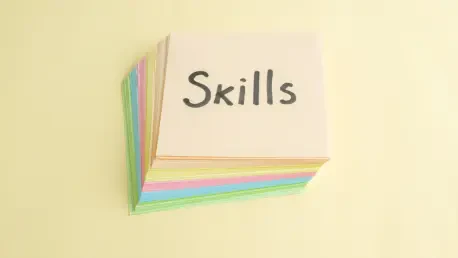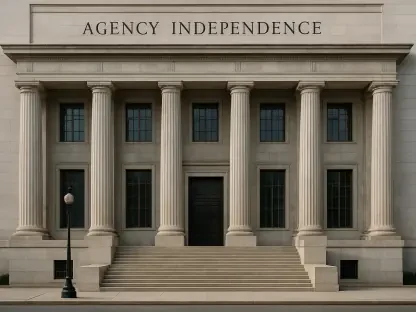I’m thrilled to sit down with Sofia Khaira, a renowned specialist in diversity, equity, and inclusion, who has dedicated her career to transforming talent management and development practices in the workplace. With a deep understanding of how modern tools and human skills intersect, Sofia offers invaluable insights into fostering inclusive environments while navigating the complexities of technology like AI. In this interview, we dive into the hidden challenges of relying on artificial intelligence in our daily work, explore the balance between digital tools and human-only capabilities, and discuss strategies for maintaining resilience in an increasingly tech-driven world.
How did you first come to recognize the potential downsides of relying heavily on AI in your professional life?
Honestly, it hit me during a project a few years back when I was using AI to draft communications and streamline data analysis. One day, the tool I relied on was down due to a glitch, and I found myself scrambling to recall how I used to structure my thoughts without it. That moment was a wake-up call. It made me realize how much I’d outsourced my critical thinking to a machine. Since then, I’ve been more intentional about balancing AI’s efficiency with maintaining my own problem-solving skills, ensuring I’m not just riding the wave but can swim on my own if needed.
Can you expand on the idea of AI being like a ‘surfboard’ in your workday? What does that mean to you?
I love that analogy because it captures how AI propels me forward with speed and ease. For instance, I use it to draft emails, summarize reports, or brainstorm ideas for inclusion initiatives. It’s like catching a perfect wave—work feels smoother and even more enjoyable. Tasks that used to take hours, like analyzing feedback data, now take a fraction of the time. But just like a surfboard, I know it’s a tool I can’t always count on. If it’s gone, I need to be ready to navigate the water myself.
What concerns you most when you think about AI failing or becoming unavailable in a critical moment?
My biggest worry is the disruption it could cause, especially in high-stakes situations. I remember a time when a system outage left my team without access to our usual tools during a tight deadline for a diversity program rollout. We had to pivot quickly, relying on manual processes and gut instincts. It worked out, but it was a stark reminder of how dependent we’d become. If AI fails on a larger scale, it could tank productivity or even jeopardize trust with stakeholders if we can’t deliver. That’s why I’m always thinking about contingency plans.
You’ve described over-reliance on AI as a ‘convenience trap.’ Can you unpack that concept for us?
Absolutely. The convenience trap is when AI makes things so easy that you stop exercising your own skills. It’s like always taking the elevator instead of the stairs—you get where you’re going, but your stamina suffers. For me, I’ve noticed it’s tempting to let AI handle writing or analysis, but over time, I risk losing sharpness in crafting nuanced messages or interpreting complex human dynamics, which are critical in my field. Those core skills need regular practice, or they’ll atrophy, leaving me vulnerable if the tech isn’t there to lean on.
Can you share more about a defining moment that made you value human-only skills in the face of technology?
I had a real eye-opener back in 2015 during a challenging project where tech couldn’t solve the interpersonal tensions in a team I was supporting. No algorithm could read the room or adapt to the unspoken emotions at play. That’s when I realized skills like empathy, adaptability, and creative problem-solving are irreplaceable. It shifted my mindset—I started focusing on nurturing those human strengths alongside tech, ensuring I’m not just a user of tools but a leader who can connect and inspire, no matter the circumstances.
You’ve highlighted caring, curiosity, creativity, and collaboration as essential human skills. Why do these stand out to you?
These four qualities—what I call the four C’s—are the heart of what makes us uniquely human in the workplace. They allow us to build trust, innovate, and work together in ways AI can’t replicate. For example, I once mediated a conflict within a team by using curiosity to dig into underlying issues and creativity to propose a solution that everyone could rally behind. In an AI-driven world, I encourage my teams to lean into these skills by fostering open dialogue and creating space for brainstorming without digital crutches. They’re the foundation of resilience and connection.
As part of staying resilient, you suggest taking stock of current AI usage. How do you personally evaluate your dependence on these tools?
I regularly audit how much I’m using AI by tracking the tasks I delegate to it, like drafting content or crunching numbers for diversity metrics. I estimate it saves me several hours a week, which is fantastic. But I also reflect on whether I’ve set expectations—both for myself and others—that I can only meet with AI’s help. For instance, if I’m always delivering polished reports instantly, people might expect that speed without realizing it’s tech-driven. That reflection helps me decide where I need to step back and do things manually to keep my skills sharp.
Another part of your framework is pinpointing areas of your role where AI can’t be used. What are some of those areas for you?
In my work, AI can’t replace the face-to-face interactions that are so critical to building inclusive cultures. Whether it’s facilitating a workshop on equity or having a one-on-one with an employee about their concerns, those moments require genuine human connection, quick thinking, and emotional intelligence. There’s no script or tool for reading someone’s tone or adjusting your approach on the fly. These are the areas I focus on strengthening because they future-proof my ability to lead, no matter how advanced technology gets.
What is your forecast for how AI will shape the balance between human skills and technology in the workplace over the next decade?
I think AI will continue to revolutionize how we work, taking over more repetitive and analytical tasks, which can be a huge win for efficiency. But I also see a growing awareness of the need to preserve human skills like empathy and creativity as differentiators. My forecast is that workplaces will increasingly prioritize hybrid models—leveraging AI for speed while investing in training that keeps our human edge sharp. The challenge will be avoiding complacency. Those who strike the right balance will thrive, while others risk becoming too dependent on tech and losing their adaptability. It’s an exciting, yet demanding, road ahead.









